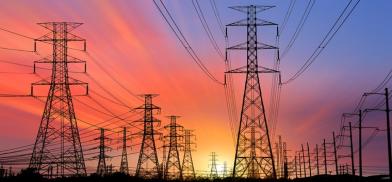Power-surplus Nepal hopes to earn $100 million from electricity exports to India
From Thursday this week, Nepal started selling electricity, around 37 MW to Indian buyers, Nepal Electricity Corporation spokesperson Suresh Bhattarai confirmed to The Kathmandu Post. More bids are invited to sell 200 MW in India’s power exchange market on a long-term basis.

With electricity in surplus during the monsoon season, Nepal is eyeing to earn around $100 million this year by exporting electricity to neighboring India, as the country became a net electricity surplus last year, with over 500 MW in excess beyond its domestic demand.
In April, Nepal and India released a Joint Vision Statement on Power Sector Cooperation, allowing Nepal to access India’s open energy exchange market for selling its around 363 MW of electricity. During Prime Minister Sher Bahadur Deuba’s visit to India, the vision statement also sought to boost overall energy cooperation between the two countries.
Although Nepal imports electricity from India during the dry season, the country’s hydropower production is around 2300 MW, during the wet season, surpassing its domestic demand which remains around 1700 MW.
From Thursday this week, Nepal started selling electricity, around 37 MW to Indian buyers, Nepal Electricity Corporation spokesperson Suresh Bhattarai confirmed to The Kathmandu Post. More bids are invited to sell 200 MW in India’s power exchange market on a long-term basis.
In the last fiscal year, the overall bilateral trade between the two countries was at around $11 billion, with Nepal having a huge trade deficit of around $8.2 billion. With fewer goods available for export, electricity has the potential to become the country’s major export to India and Bangladesh, two of the region’s power-hungry countries.
Nepal is hoping to export electricity worth over $100 million to India. This would enable the country to partially cover the cost of electricity that it imports from India during the dry season. In 2021, Nepal imported electricity worth around 178 million from India while its electricity export was $10 million.
According to the World Bank estimate, Nepal could easily exploit its hydropower potential of 43,000 MW, roughly seventeen times its existing production capacity. With rising fuel and coal costs around the globe, the demand for relatively cheaper hydropower is rising.
By 2030, Nepal’s hydropower generation capacity is estimated to grow up to 15,000 MW, according to the World Bank projection. This, according to experts, could also allow Nepal to reduce its dependence on fossil fuel imports, currently accounting for most of its import bills.
With the recent Joint Statement on Power Sector Cooperation, Nepal is expecting major investment from Indian companies in the energy sector. Prime Minister Sher Bahadur Deuba too had said recently that the government would award two major power projects to India.
(SAM)









Post a Comment